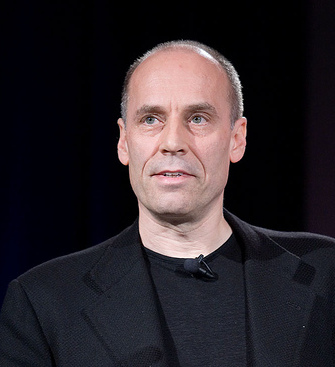Former Mental Images CEO Rolf Herken is assembling a team of engineers and financiers to explore a proof-of-concept approach to software development. Dassault Systèmes is an early partner.
By L. Stephen Wolfe, P.E.
Venture capital has spawned many successful companies, made rich people out of bright, hardworking folks from middle-class families, and turned famous venture capitalists into billionaires. But for every home run financed by VCs, a half-dozen or more outfits have gone broke or sold assets for pennies on the investment dollar. And the high cost of venture-capital startups means any innovation that doesn’t promise extraordinary, short-term returns probably won’t be funded.

Rolf Herken, founder and former CEO of Mental Images GbmH, thinks he has a more efficient way of funding technical innovation. Mental Images was best known for its Mental Ray realistic rendering software, but it also developed other technologies in the computer graphics field such as the Reality Server for viewing large models in a web browser; Mental Mill and MetaSL for creating standard shaders that can be shared amongst rendering tools; and Iray, another ray-tracing engine intended for massively parallel and cloud-based computing. After more than 20 years of independence, Nvidia, a leading maker of graphics-processing units, bought Mental Images in 2007.
After five years at Nvidia and policy disputes with its volatile founder and CEO, Jen-Hsun Huang, Herken left to form MINE Innovation Engineering GmbH (MINE) in 2011 with a mission to invent new technologies with lower risks and costs. In a typical venture-capital startup, investors want to see the whole development, marketing, and sales teams in place before software development is funded. The result is a high cash burn-rate and pressure to deliver software quickly. Employees receive shares of stock in exchange for lower salaries. If the company succeeds, they get rich. But if it runs out of money, their shares can become worthless.
MINE’s approach reduces risk by hiring only the technical teams during early stages of development and partnering with large corporate sponsors that want to fund research in well-defined areas. Once a new technology has passed the proof-of-concept prototype phase, targeted to occur within 18 to 24 months of starting a project, a start-up company is formed with the corporate sponsors, MINE, and other investors each taking an interest. Engineers may elect to join the startup and receive stock or stay with MINE and begin a new project.
MINE’s current team of ten executives and engineers includes Peter Mehlstaeubler, COO and Managing Director of MINE, Berlin; Larry Tesler, Chief Experience Officer of MINE; and Gary Yost, VP Engineering Management of MINE, San Francisco. MINE plans to hire more than twenty scientists and engineers within the next six months.
 MINE’s first partnership, announced on November 19, is Reality Ventures, formed with Dassault Systèmes, a leader in CAD and other mechanical engineering software. The initial investment of Reality Ventures in MINE funds “several large-scale, confidential proof-of-concept prototypes” that are “fundamental scalable platform solutions for cloud computing and…related cloud-based consumer and professional applications.” Once validated internally, these projects will be turned into start-up businesses funded by Reality Ventures. Although no specific product plans have been announced, a source close to the company suggested that one project might be a successor to Mental Images’s Reality Server, which has languished at Nvidia. (See “Visualization group also now controls the destiny of RealityServer and iRay” for additional Reality Server history.)
MINE’s first partnership, announced on November 19, is Reality Ventures, formed with Dassault Systèmes, a leader in CAD and other mechanical engineering software. The initial investment of Reality Ventures in MINE funds “several large-scale, confidential proof-of-concept prototypes” that are “fundamental scalable platform solutions for cloud computing and…related cloud-based consumer and professional applications.” Once validated internally, these projects will be turned into start-up businesses funded by Reality Ventures. Although no specific product plans have been announced, a source close to the company suggested that one project might be a successor to Mental Images’s Reality Server, which has languished at Nvidia. (See “Visualization group also now controls the destiny of RealityServer and iRay” for additional Reality Server history.)
Once success is demonstrated in the familiar field of computer graphics, Herken hopes MINE will establish partnerships in other fields such as application-specific processors, neural computing, robotics, energy, life sciences, and medical technologies. More information can be found at http://www.mine.com/.
L. Stephen Wolfe, P.E. is a contributing analyst for Jon Peddie Research and occasional contributor to GraphicSpeak.






